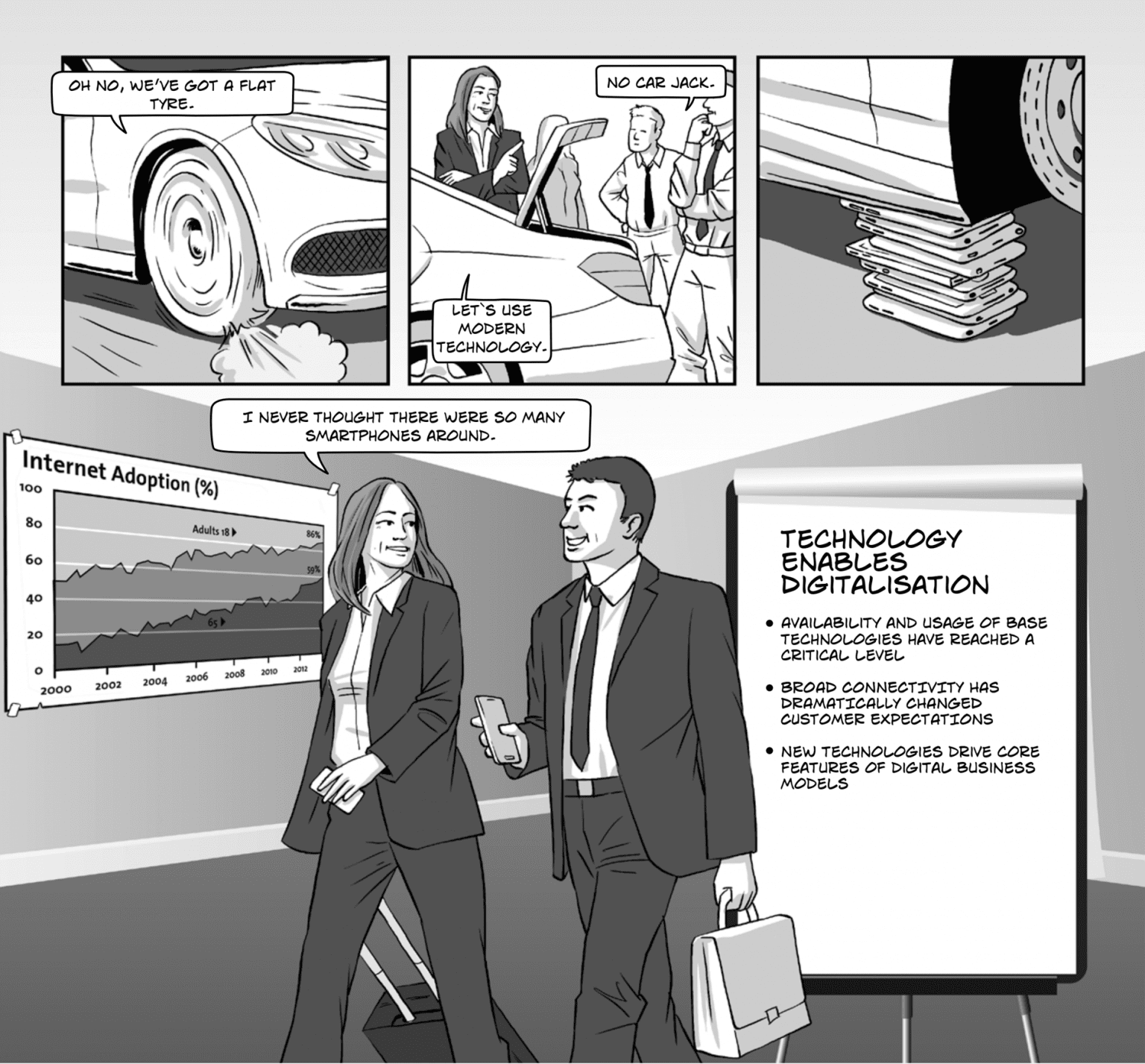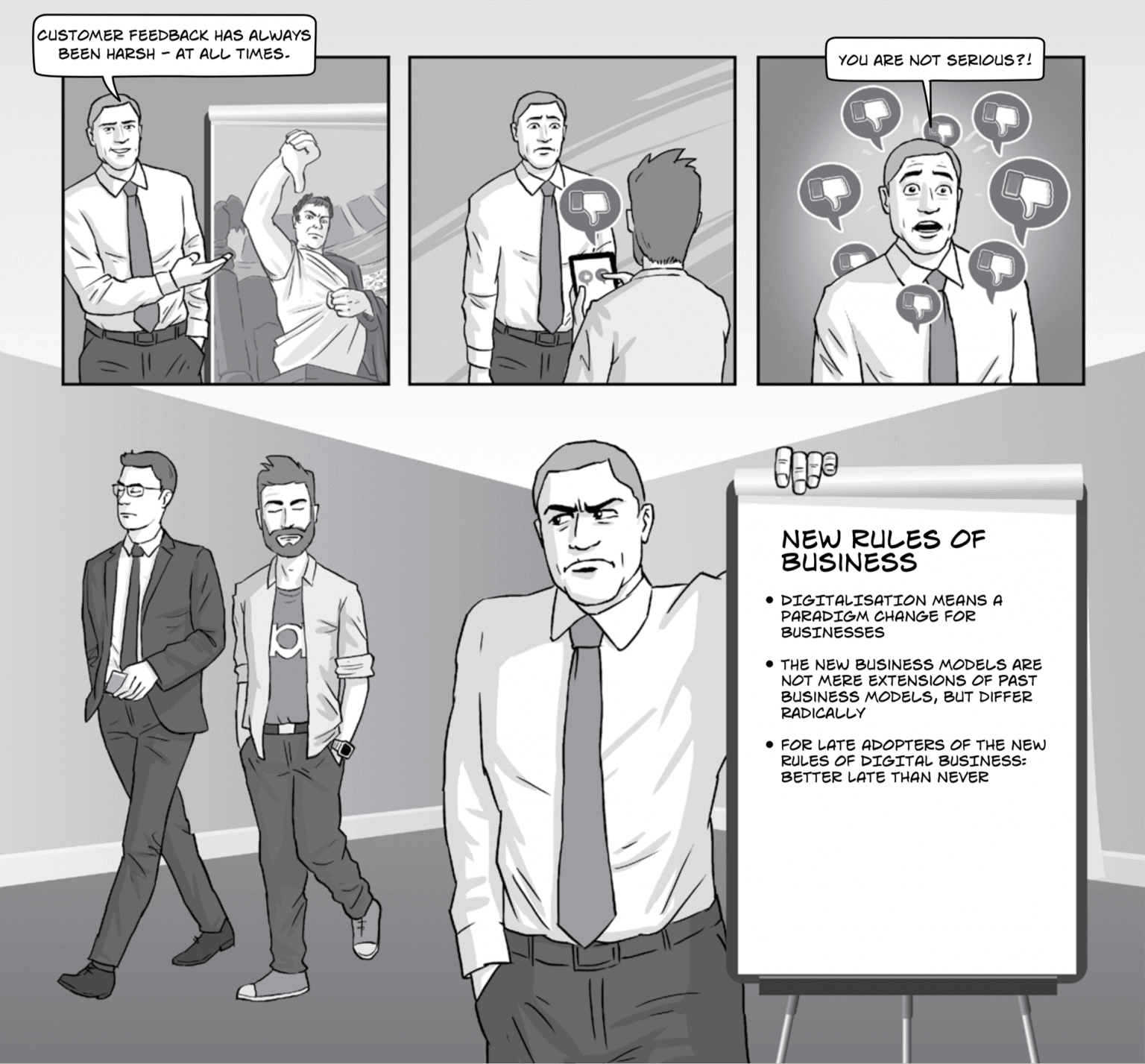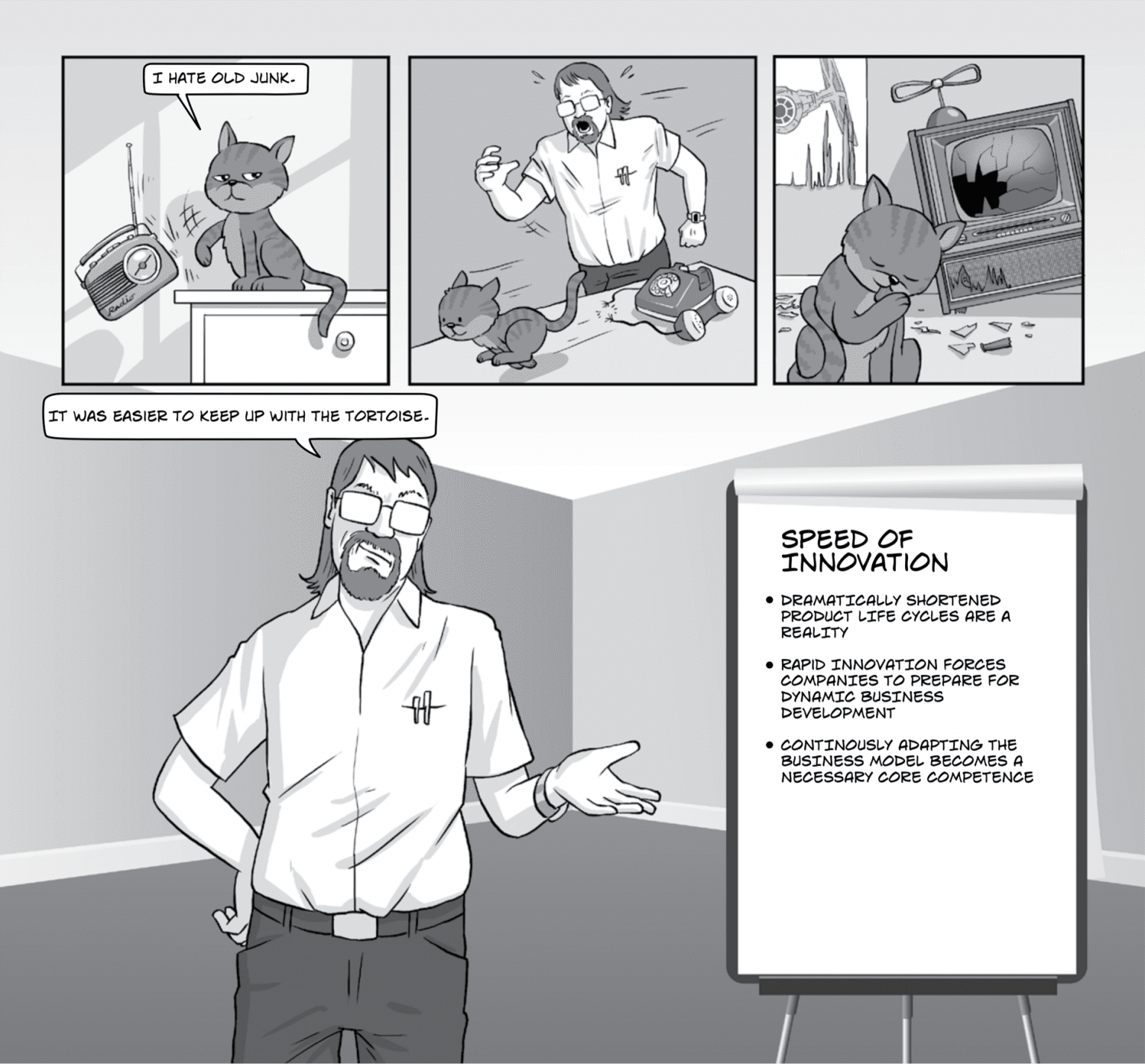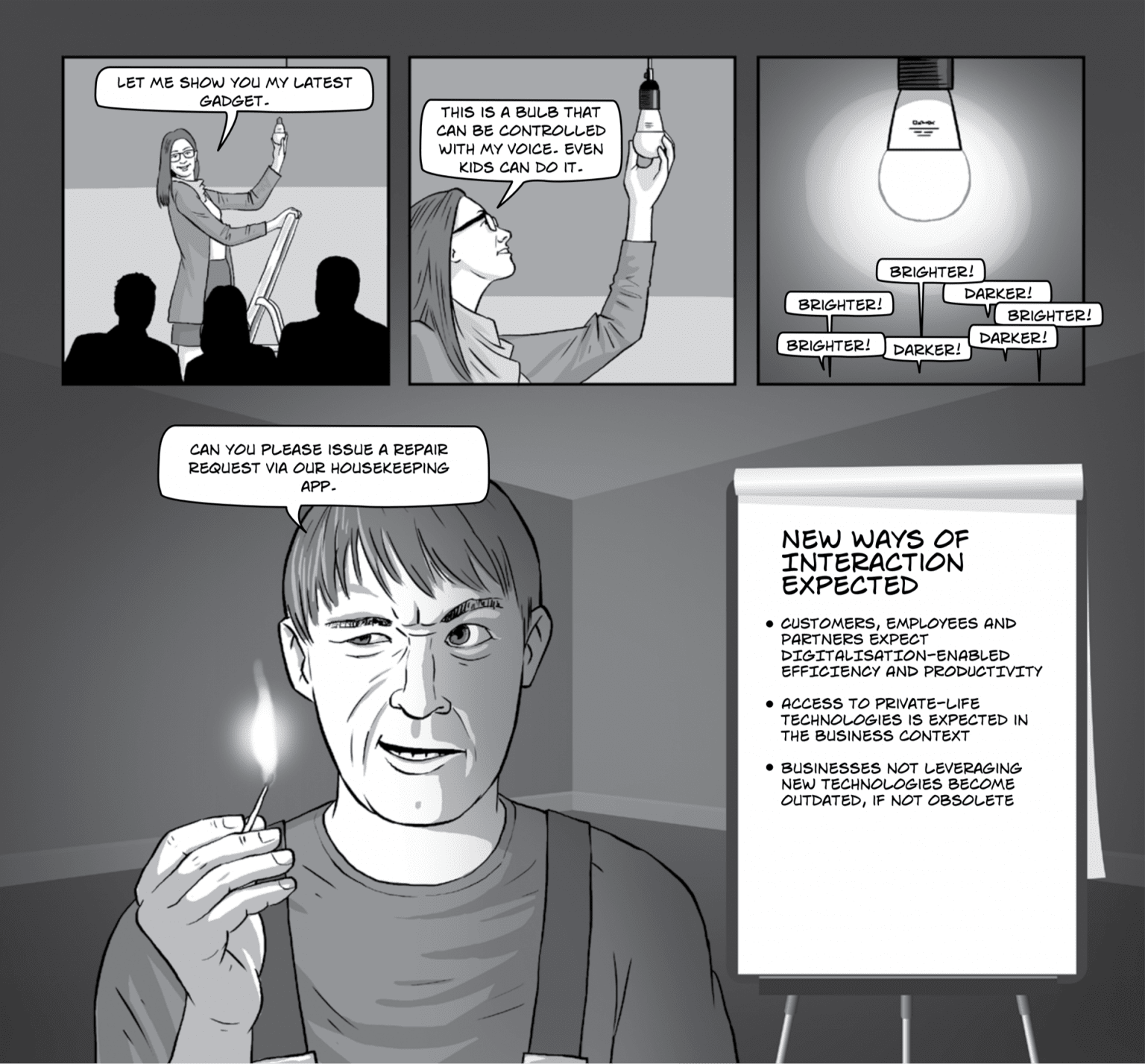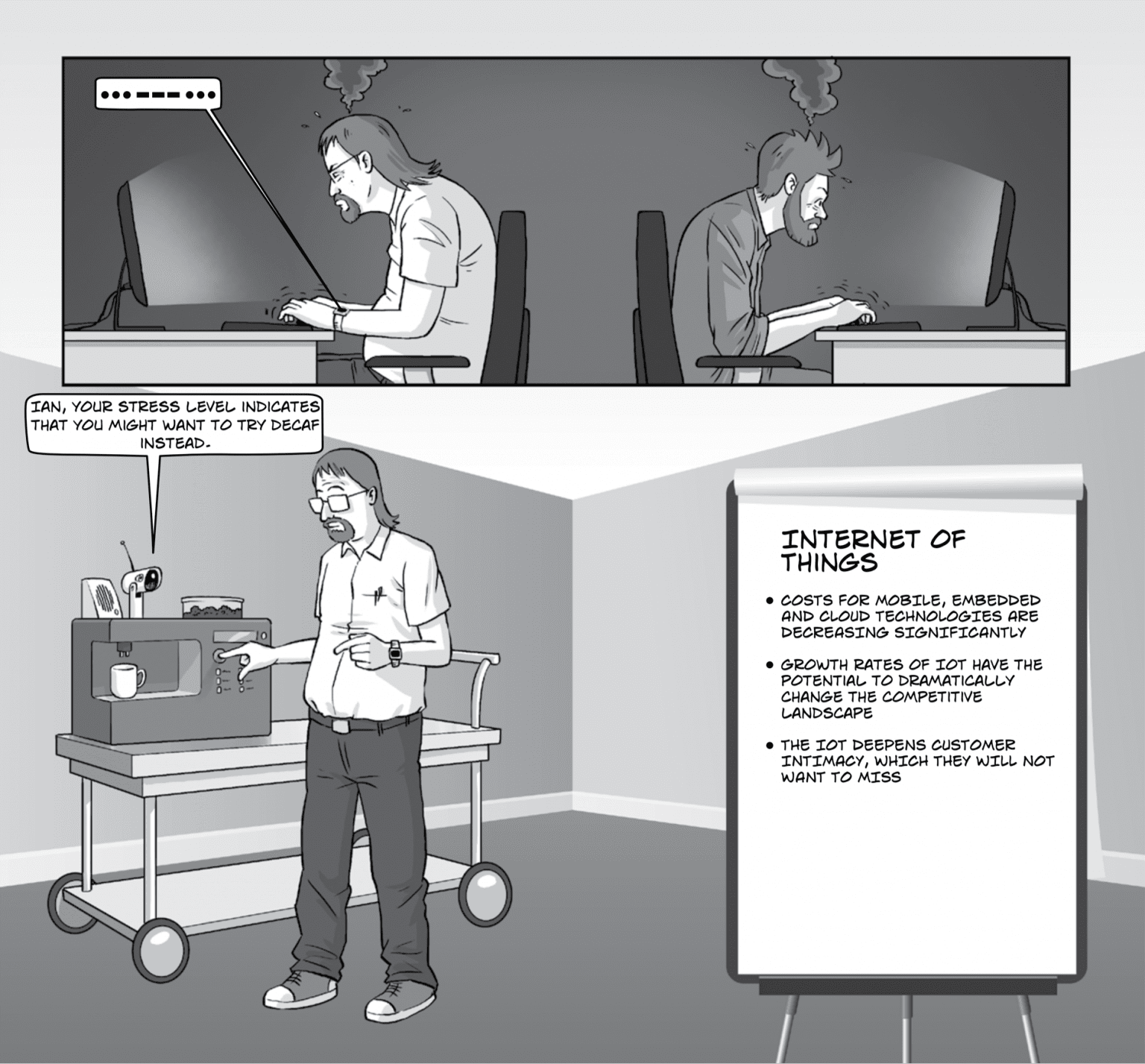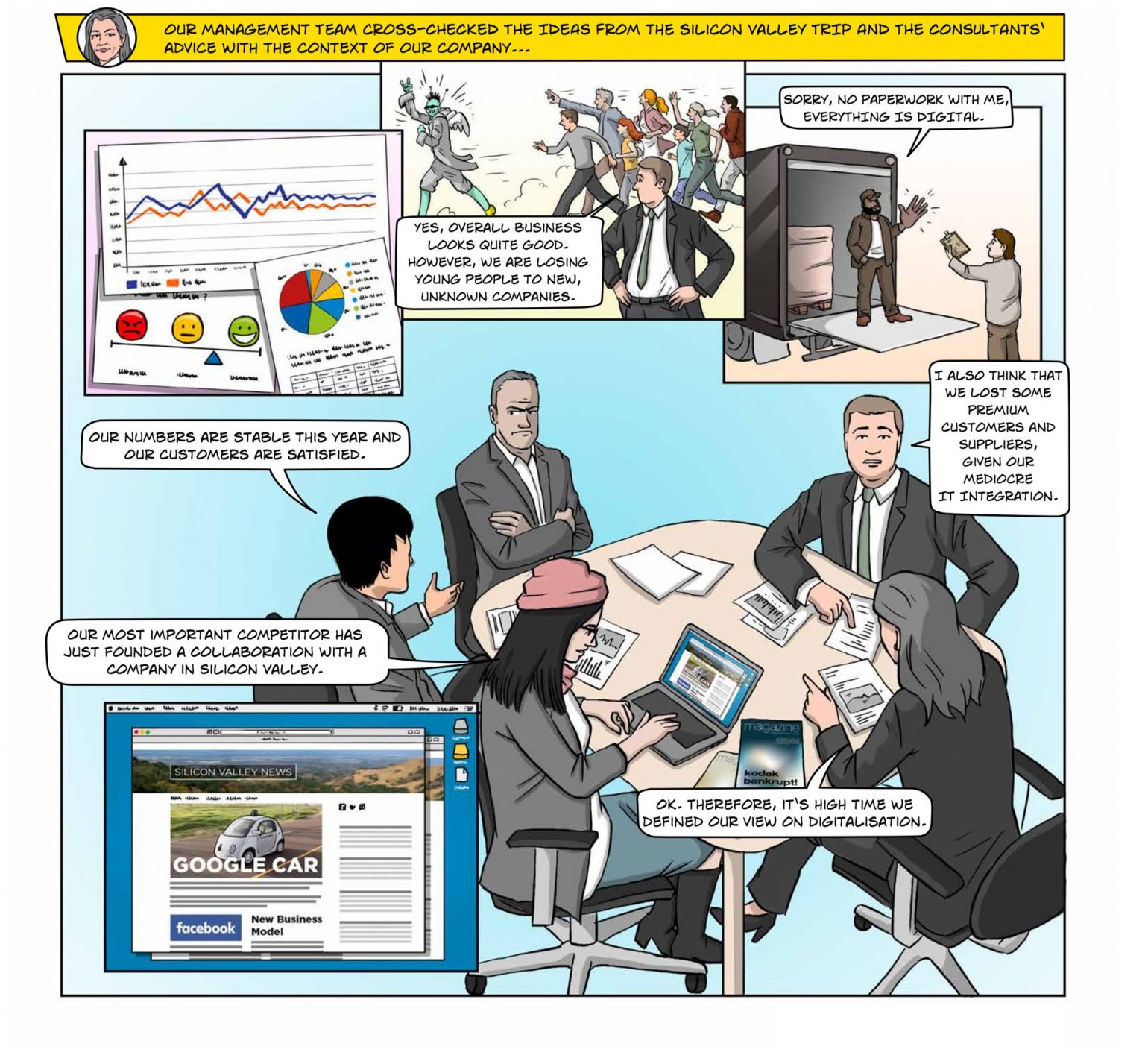Part 1: Why Is It Important To Become Digital Right Now?
We elaborate first, how digital empowers a new thinking in businesses. As a core effect of digitalisation, enterprises gain robustness allowing them to better deal with a variety of complex challenges. Enterprises are forced to act in order to meet the immense competitive pressure.
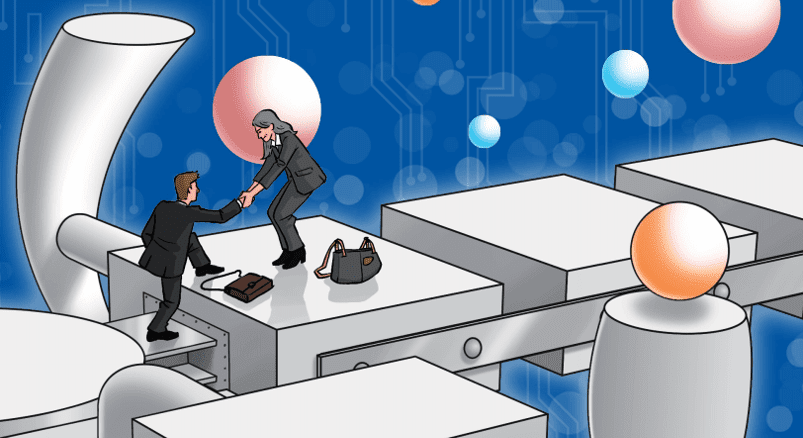
Part 1
For decades the deployment of information and communication technology (ICT) in business contexts and the subsequent exploitation of its efficiency-driving capabilities have transformed and sometimes revolutionised business models. ICT has driven completely new products and services into the market, as well as enabling increasingly automated operating models. Enterprises have greatly leveraged ICT to gain a competitive advantage.
In recent years, the notion of a digital business has emerged. Radically game-changing developments have enabled the digitalisation of businesses, usually creating nothing less than their comprehensive transformation.
Part 1
The Cattedrale di Santa Maria del Fiore (also commonly known as Il Duomo di Firenze, or Florence Cathedral, Italy) is an extremely high calibre feat of engineering that transformed the engineering standards of the day. The dome of the church, nearly 150 feet across, was the largest of its time and remains the third-largest in the world to date. Interestingly, at the start of the construction project there was no viable technology to build the huge dome, which had been conceived architecturally, yet the highly ambitious project sponsors launched the project hoping that the right technology would appear at the right time to finish the dome.
Part 1
Devastation caused by powerful earthquake shocks can often be drastic and far-reaching. The strongest earthquake in Valdivia, Chile (1960), had a magnitude of 9.5 and was felt in Hawaii, while the deadliest earthquake in Shaanxi, China, killed nearly a million people. Shocks are typically unexpected and cause contrasting impacts due to differences in prevailing environments. Many aspects of digital disruption are comparable to shocks from incidents such as earthquakes. Powered by the rapid emergence of a wide variety of affordable technologies and consequential changes in customer behaviour, major movements are taking place in the environments that businesses operate in – creating digital shocks.
Part 1
The rapid rate of digital change is one of the main reasons companies must swiftly deal with the challenges of digitalisation. Until the mid-eighteenth century, use of the term ‘innovation cycle’ was not widespread. The leisurely pace of innovation from today’s perspective allowed companies to use the same business model for decades. Inventions such as the steam engine, the telegraph, the widespread use of electric current, the internal combustion engine and the assembly line then laid the foundations of the Industrial Revolution. Despite these innovations, professions were still clearly defined.
Part 1
Over the past couple of decades, all our private lives have been significantly affected by the advent of new technologies, with everpresent access to PCs, mobile phones, smartphones, tablets and, very soon, virtual reality devices. We can surely expect this trend to continue and we will no doubt be eager to reap the convenience offered by such consumer electronics, albeit often ignoring their impacts on data protection. Businesses have capitalised on this trend and have used these new devices as effective channels to communicate with their customers.
Part 1
In the previous sections we have discussed the fact that customers, employees and partners have adopted digital services. More and more people are not only able to handle digital services, but they also expect digital tools to be available and anticipate their ease of use and responsiveness – these technologies are core to their day-to-day life. The rapid adoption of new and existing digital tools will continue to increase, given the fast pace of technology and the awareness that technology-savvy generations have already grown up with. According to the general definition, the so-called ‘Generation Y’ was born between 1980 and 1995, meaning that today they are already aged between 21 and 36.
Part 1
Before getting into the detail of what customer centricity is, it makes sense to understand why the topic is growing in relevance, directly affecting the competitive advantage of enterprises. Customer centricity has always been significant, as the intent of most businesses is to deliver relevant offerings to their customers that lead to greater revenue and ultimately to profit. Today, in order to maintain or grow market standing and retain competitiveness, it is even more essential to put the customer at the centre of the organisation’s business model. The reason is partially related to the rapid changes and advances in technology and communication, combined with explosive growth in data and information, which have given rise to significant changes in customer behaviour.
Part 1
In 2004, the American magazine Businessweek featured an innovation and design firm, IDEO, in a cover story describing an approach IDEO was applying to every business challenge: Design Thinking. The story had a profound impact, and since then Design Thinking has influenced many businesses and organisations worldwide by defining a new way of interaction between corporations and their customers (for example Procter & Gamble, SAP, Deutsche Telekom, Airbnb and Zoo Hannover) in addition to becoming an academically taught discipline. Design Thinking constitutes a user-centred, insight-driven, explorative and iterative approach to problem-solving.
Part 1
In many industries, the Internet of things (IoT) is seen as the next key driver of business model innovation in the coming decades. The large analyst firms have tried to outdo each other with excited, multibillion-dollar predictions of revenue and GDP growth from the IoT. In fact, the transformational potential of the IoT is huge. The basic assumption is that in the future, almost all products – consumer as well as industrial – will become more intelligent and leverage always-on connectivity to access value-adding services in the cloud or other back end. Industry analysts are still bullish on the growth potential of the IoT, as can be seen in the following figure.
Part 1
The previous chapter discussed how digitalisation brings a new kind of relationship between
companies, customers, employees and suppliers, resulting in new business models. These
business models are increasingly replacing established models from the nineteenth and twentieth
centuries, creating large pressure for companies to act differently. In addition to achieving the main
objective of better market positioning, these changes can also offer other desirable results, such as
the opportunity for companies to be far more efficient and sustainable as a result of the digital
transformation.
Part 1
Companies have their limitations in the task of coping with growth. They pay for additional growth with inefficiency, with the consequence that profits and sales can no longer be easily increased by sheer growth. In the digital age, large companies are challenged to break through this limit by more effective means of communication, improved data management and automated processes, while digital platforms enable smaller companies to organise themselves into networks to jointly implement large projects.
Part 1
This section deals with the question of how digitalisation enables companies to increase robustness in complex supply chains. International trade rose rapidly in value and quantity in the second half of the twentieth century. This has resulted in complex interdependencies, which means that the isolated consideration of individual markets/ companies is often impossible nowadays. At the same time, market conditions transformed fundamentally – the intensified competition stemming from globalisation, such as greater customer demand for product variety or shorter product life cycles, confronts companies with challenges that often cannot be handled within the organisation.
Part 1
Companies often grow selectively through mergers or the acquisition of other companies (mergers and acquisitions or M&A). Spectacular corporate transactions such as the merger of AOL and Time Warner (about US$162 billion) or the takeover of Mannesmann AG by Vodafone (about US$180 billion transaction value and over 130,000 concerned Mannesmann employees) are prominent examples of the impact of these M&A strategies on business and corporate structures. However, M&A activity is cyclical by nature and M&A waves are usually preceded by technological shocks (e.g., digitalisation) and occur in a positive economic and political environment.
Part 1
Today, global competition drives many traditional companies to increase pressure on their employees. Companies use new digital media such as email, online messaging and smartphones to raise expectations of employee reachability, intensify working processes and enhance control. Under this model, employees are considered resources. Reorganisations, work intensification, out- and insourcing activities etc. lead to an increasing alienation of employees from their companies. At the same time, market pressure urges companies to adapt to global supply chains and flexibly react to ever-changing customer demands.
Part 1
Digitalisation not only affects the way businesses meet and beat future challenges – it also pervades ongoing business activities. In fact, sales and marketing were among the first ground-breaking digital functions (e.g., the move of advertising onto the Internet). It is essential to consider the best place to reach the customer and how to communicate with them in a digital world, even more so in light of the current trend of decreasing customer loyalty to a particular company or its products – see, for example, the result of a banking study by IBM, which found that ‘… a new generation of financial technology companies are … threatening to reduce the incumbents to settlement agents of last resort’.
Part 1
The previous chapters have shown that digitalisation can bring a huge competitive advantage. Consequently, it places enormous pressure to act on companies that are not yet digital. The danger for late adopters can be found in the impact that digitalisation has on the whole market. Markets that were once protected by very high barriers to entry can be disrupted by digital solutions. Enterprises that refuse to adapt to the digital age are endangering their own future.

